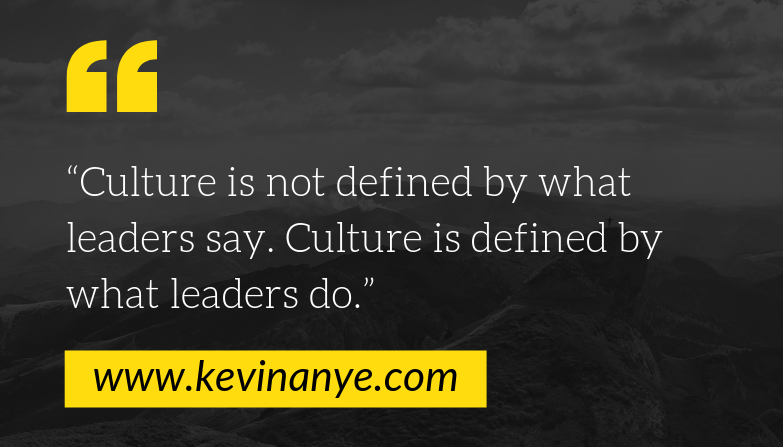For a thriving organization that achieves one milestone after another, do you know what comes above everything? It’s a culture of continuous improvement.
And it makes complete sense why. Businesses that decide to sit back after designing and executing a great business model limit their chances of reaching their highest potential, missing opportunities.
The key is being consistent in your efforts to keep improving. No matter how great your business is doing right now, ask and never stop asking yourself, ‘What can be done to step up to the next level?’
Because a product or service is never good enough.
When you always have something better to offer, you create a competitive advantage. As a result, your competitors will have a much more difficult time taking market share from you.
Bringing a Cultural Change
With that said, bringing a cultural change in your workplace isn’t an easy feat. To do so, you need to be consistent, patient and determined in your efforts to bring cultural change.
It may take time to implement. The outcome may not be stellar in the beginning, but the reward will be tangible and long-term.
So, if you’re ready to build and maintain a culture of continuous improvement in your organization, this guide featuring 13 simple yet effective tips will help you get there.
1. Know Your Ultimate Goal
The right way of starting your business with a bang is by having an end goal in mind. When you know where you’re headed and are dead focused to get there, you’ll arrive, despite the obstacles and challenges that present themselves along the way.
Ask yourself the following questions:
– What does your current business model look like?
– What are the key elements of your business culture right now?
– How do you expect your company to look in the near future under the most optimistic yet realistic scenario?
Your answer to that final question is what you should be striving for.
Once the target is clear, map out an action plan to achieve it. Your goal should be challenging enough to keep you motivated yet, it should also be attainable enough to prevent discouragement.
One great way to foster a culture of continuous improvement is by setting monthly and annual goals that align with the vision and mission of your business.
2. Spread the Word
The next step is to get buy-in from your stakeholders and communicate the target for continuous improvement across your organization.
Your stakeholders may have some valuable feedback to modify the plan – so, be ready to take some notes. It’s also best to document the refined goals so that your staff can have access to it at all times.
To push your organization down the road to continuous improvement, you need to get everyone on board and ensure they have a shared vision and proper understanding of the mission.
3. Put a Framework in Place
The success of a continuous improvement project depends on the strength of its framework. Just like any other program, an operating model and a clear set of procedures are crucial to executing the plan.
Fortunately, several frameworks exist for a culture of continuous improvement, which when utilized correctly, lead to the development of innovative improvement ideas.
Hence, you need to have a reliable framework in place that provides endless inspiration and opportunities for improvement.
4. Make Education and Training Ongoing
Building a culture of continuous improvement is a change that happens neither naturally nor overnight.
You need to ensure that the people in your organization are all on the same page. Nobody likes change but for a change as rewarding as this, you need to spread awareness and educate your employees. Communicate the benefits that this new culture will bring to both the staff and the organization.
Moreover, if you think the staff isn’t making the most of the available tools, offer intensive training sessions to make the transition easier.
It’s important to note that the educational and awareness sessions, as well as the training programs, should be ongoing. If they aren’t, people will get distracted and lose sight of the goal.
Out of sight, out of mind.
#GoodThingsToRemember
Keep reminding them of the practices and behaviors they need to exhibit every day to maintain your desired culture.
5. Tie It to Each Individual’s Job
Collective participation is the key to meeting your organization’s continuous improvement goals. From the line workers to management and the executive suite, everyone needs to contribute.
Your employees should be motivated and empowered to fully engage in promoting a continuous improvement culture and proactively identifying the improvement areas.

This is only possible when they realize their responsibilities and the role they play in the organization’s growth. The idea is to make change everyone’s responsibility. There are so many opportunities and rewards that it requires the efforts of the entire team.
Additionally, when the responsibility is shared equally, it becomes easier and a lot less stressful for the organization to achieve the target.
6. Step Up Your Communications Game
It goes without saying that attempting to build a culture of continuous improvement will lead to changes. However, changes in the working process, even if they’re for the better, can result in chaos and confusion if they aren’t managed and communicated well. A few people sticking to the old ways of doing things due to a lack of awareness will be your biggest nightmare.
To prevent this hybrid model and the heap of problems that come with it, you should make sure that you communicate the organization’s goals. Otherwise, every positive change will be a curse in disguise, leading to more work, disturbed workflow, and overall disorganization.
The best way to go about this is by documenting best practices and your expected standards. In order to be effective, your message should be clear, loud, and consistent across all communication channels.
7. Take One Step at a Time
Bringing a cultural change in your workplace is a sensitive matter – don’t rush it. A continuous improvement program requires plenty of time, energy, and a boatload of hard work.
Hence, you must prioritize things and follow a strict, pre-planned schedule. Don’t rush into making a lot of big changes right in the beginning or the equilibrium of your organization will be severely compromised.
Ideally, during the first year, you should consider focusing on the amount of effort and time it takes to begin, normalize, and sustain initiatives. This will help give you a sense of how much improvement your company can realistically handle at once.
Instead of combining multiple steps and compromising your results, you should move cautiously to avoid potential problems.
8. Keep Track of Quantifiable Outcomes
When you implement a good continuous improvement program for your small business, you’ll yield some amazing results. Make sure that you quantify them to review and improve upon.
The increasing number of positive outcomes will provide momentum and push to your program, encouraging you and your employees to keep investing in the cause. When your team sees their efforts converting into desirable results, they’ll be more encouraged to make contributions and await the impact they make on the organization’s success probability.
9. Recognize the Efforts
Promoting a continuous improvement culture isn’t a one-time event. It’s a continuous process that requires your team to critically analyze their performance and identify ways to improve it.
So, when your plan starts to gain momentum and shows positive results, don’t hold back in recognizing the efforts behind it.

It’s human nature to want to be recognized and appreciated for hard work. As a result, it’s critical that you give positive feedback and reinforcement to your employees.
Many employees are intrinsically motivated to keep performing better. They take pride in their work. All they need is some acknowledgment and praise for a goal well achieved.
No matter how far you’re from the finish line, never hesitate to pause for a moment and celebrate success by sharing success stories. This will help you sustain the process and keep your employees motivated in the long haul.
10. Roll Up Your Sleeves and Participate
One of the biggest turn-offs for employees is seeing the leadership making little to no effort in practicing what they preach.
Your staff will judge your commitment and dedication to continuous improvement by what you do and not what you say. So, stand alongside your team and participate in achieving the organization’s goal.

You should build a team of leaders who believe in doing their part to improve the company’s processes and who aren’t afraid to speak about it whenever they get a chance. When your employees see the leadership team working hard to promote a culture of continuous improvement, that’s when they’ll know it’s serious and worth investing their time into.
11. Close the Loop ASAP
You’ll probably not be surprised to hear that organizations with a remarkable continuous improvement culture tend to implement most of the improvement ideas presented by their employees.
Don’t assume that their team is more capable than yours. Generally, their results are based on the fact that they follow up on almost all ideas – even those that aren’t that great.
The truth is, bad ideas are never useless because they point toward opportunities for improvement.
If you want to build a culture of continuous improvement, you should make it a rule to respond to any suggestions that your employees bring to the table. You can do this by announcing either your approval or a coaching session aimed at modifying the idea to come to a better solution.
12. Leverage the Power of Technology
Technology offers great support for promoting a continuous improvement culture in the organization.
It not only boosts the involvement of people and brings the whole organization together but also accelerates the rate of improvement and engages leadership.
KaiNexus, for example, is designed specifically to help simplify, standardize, and spread an organization’s continuous improvement process.
Hence, it’s never a bad idea to use software whose purpose is to drastically increase your chances of success.
13. Trust Your Employees
Trusting the job of bringing cultural change to your workforce may be difficult to embrace. However, you need to understand that it’s your biggest asset for fostering a culture of continuous improvement.
Your employees work on the front lines of your business, interacting directly with your customers, as well as dealing with your products and services. For this reason, their position offers the perfect view of where your improvement ideas may work best.
For this reason, you should always be willing to trust and carefully consider the ideas and suggestions brought in by your employees. This may actually end up further strengthening your workforce by capitalizing on their creativity and their ability to gauge market needs to devise unbeatable solutions.
Taking the Next Step
Building a culture of continuous improvement may take several years of careful planning and deliberate action. However, your effort will be worth it in the end. The key is to focus on good leadership, methodology, and technology while increasing transparency and communication within your organization.
The most important thing to remember is that culture comes from the top.
Culture is not defined by what leaders say. Rather, culture is defined by what leaders do.
#QuoteBySomebodySmart
So, with these invaluable tips for promoting a continuous improvement culture, are you ready to take a leap for the better?


